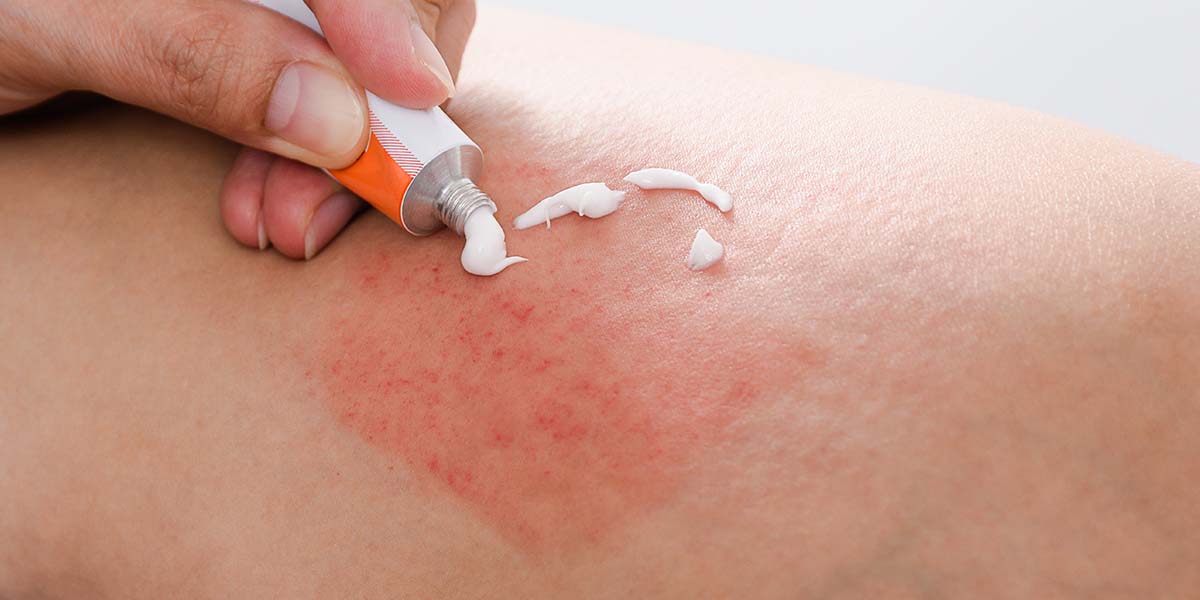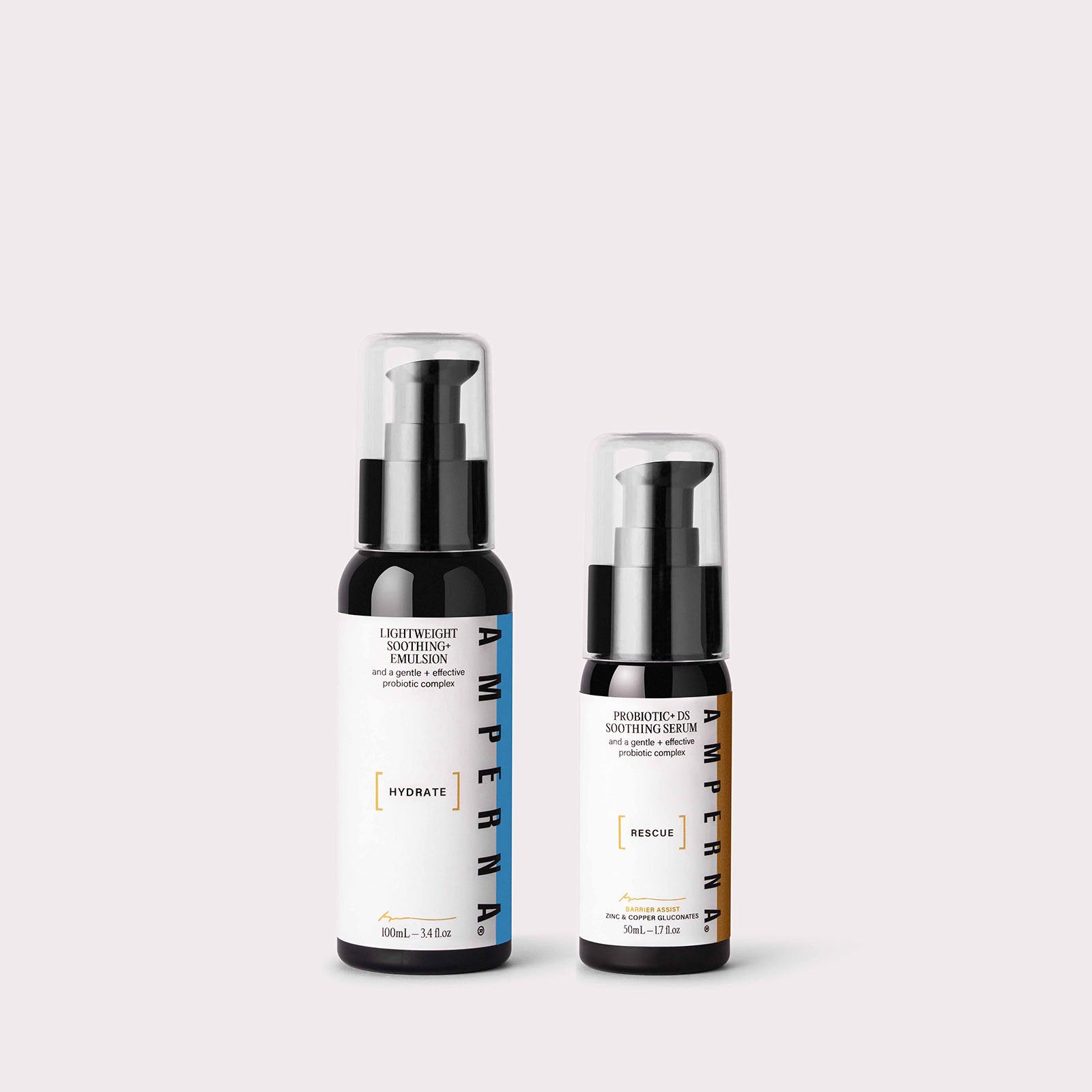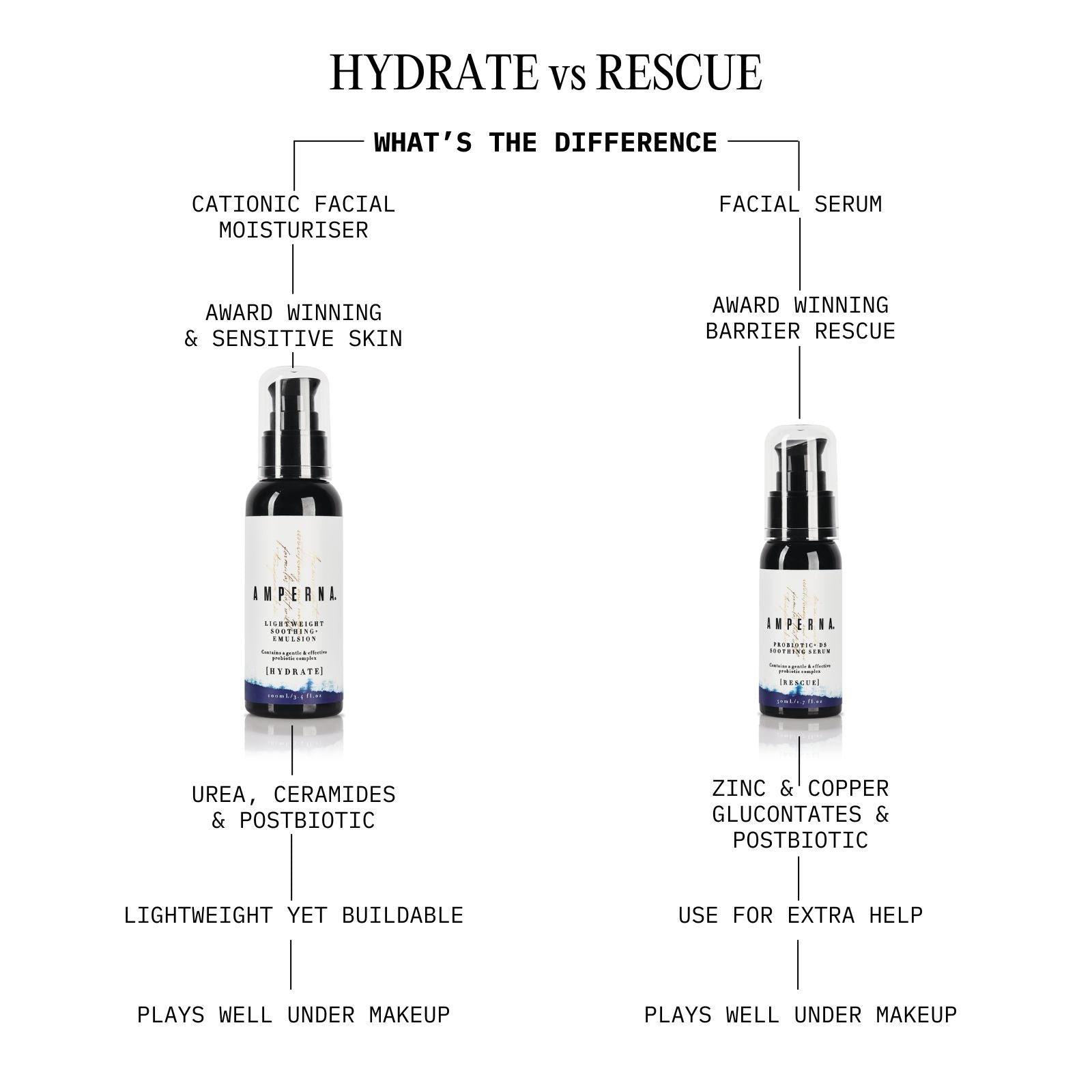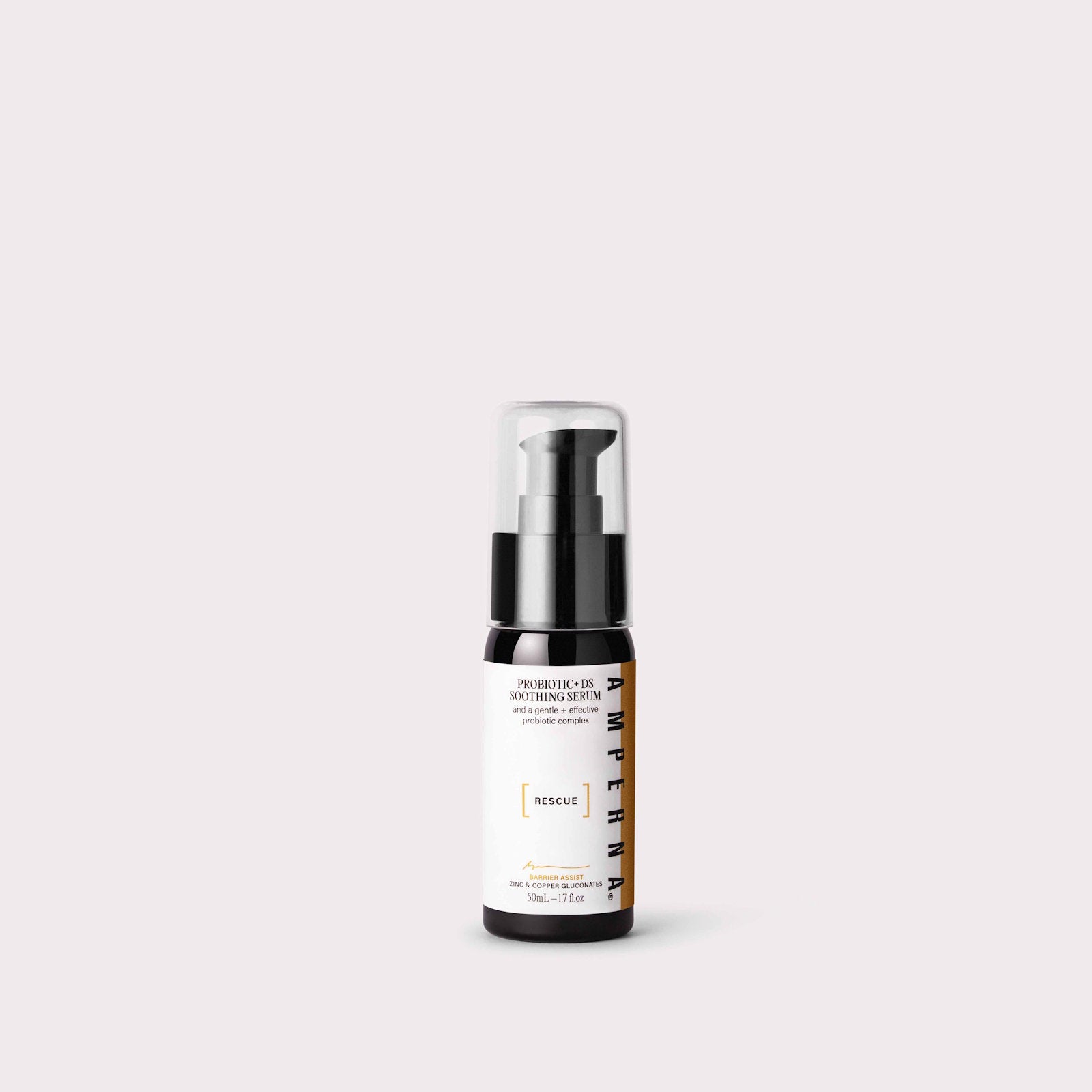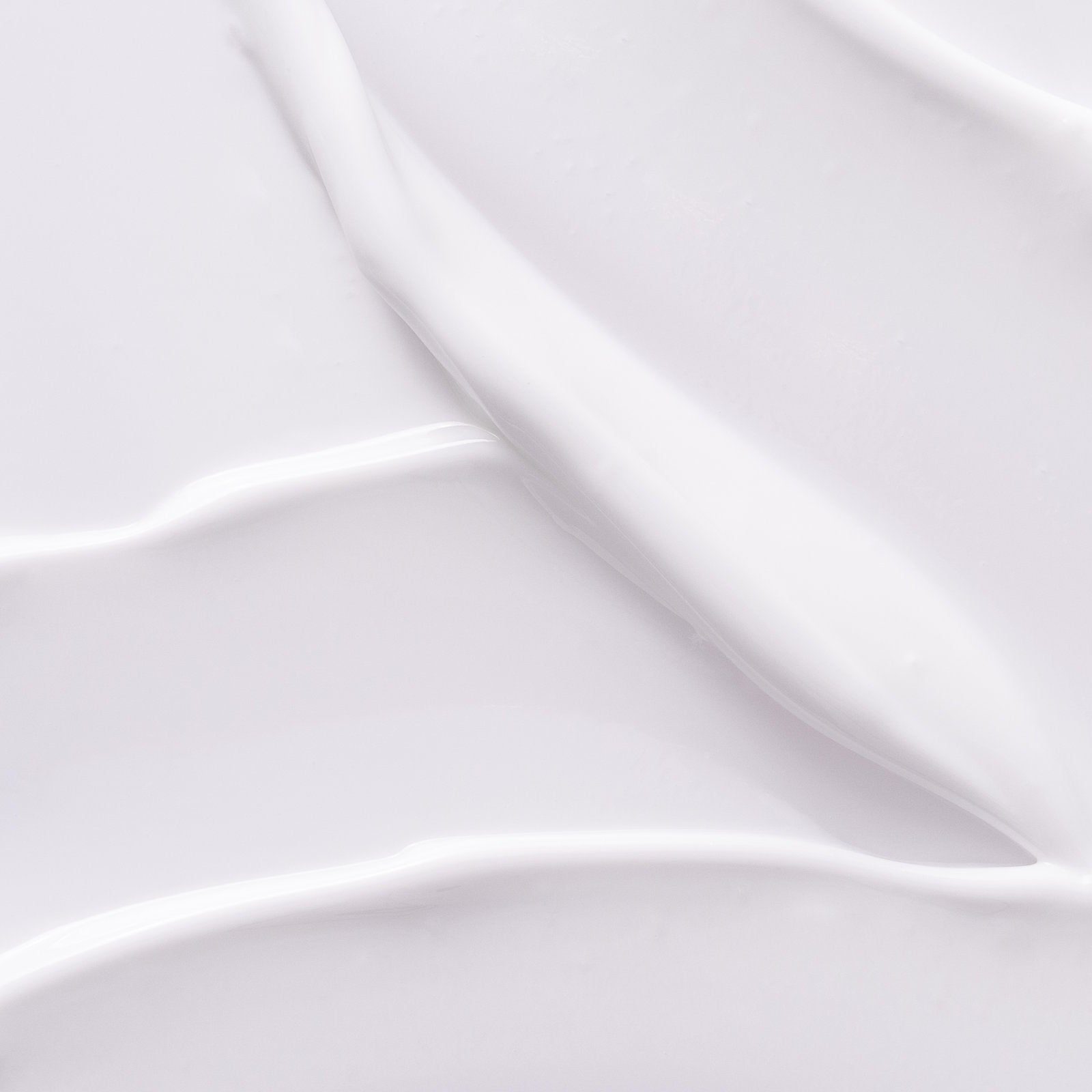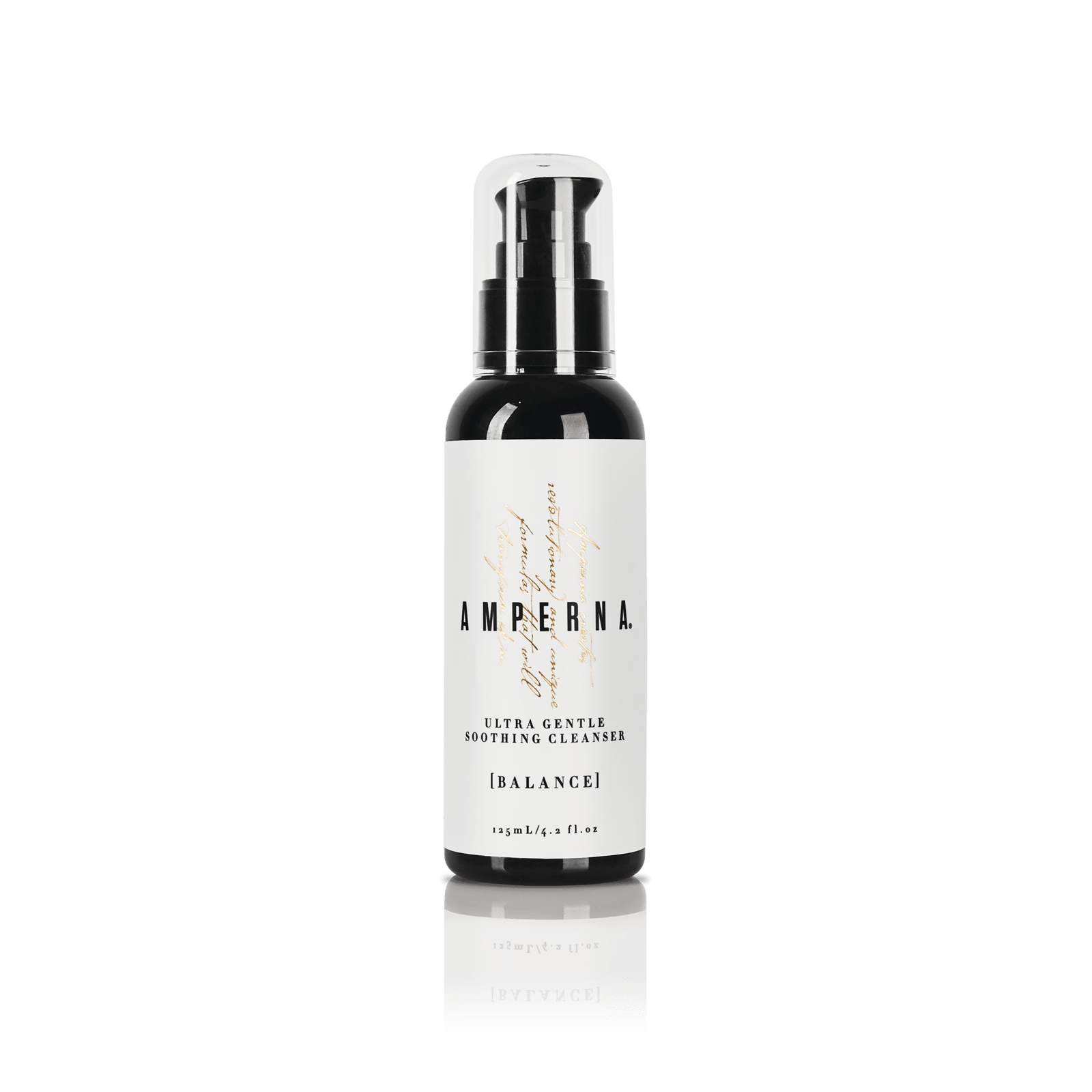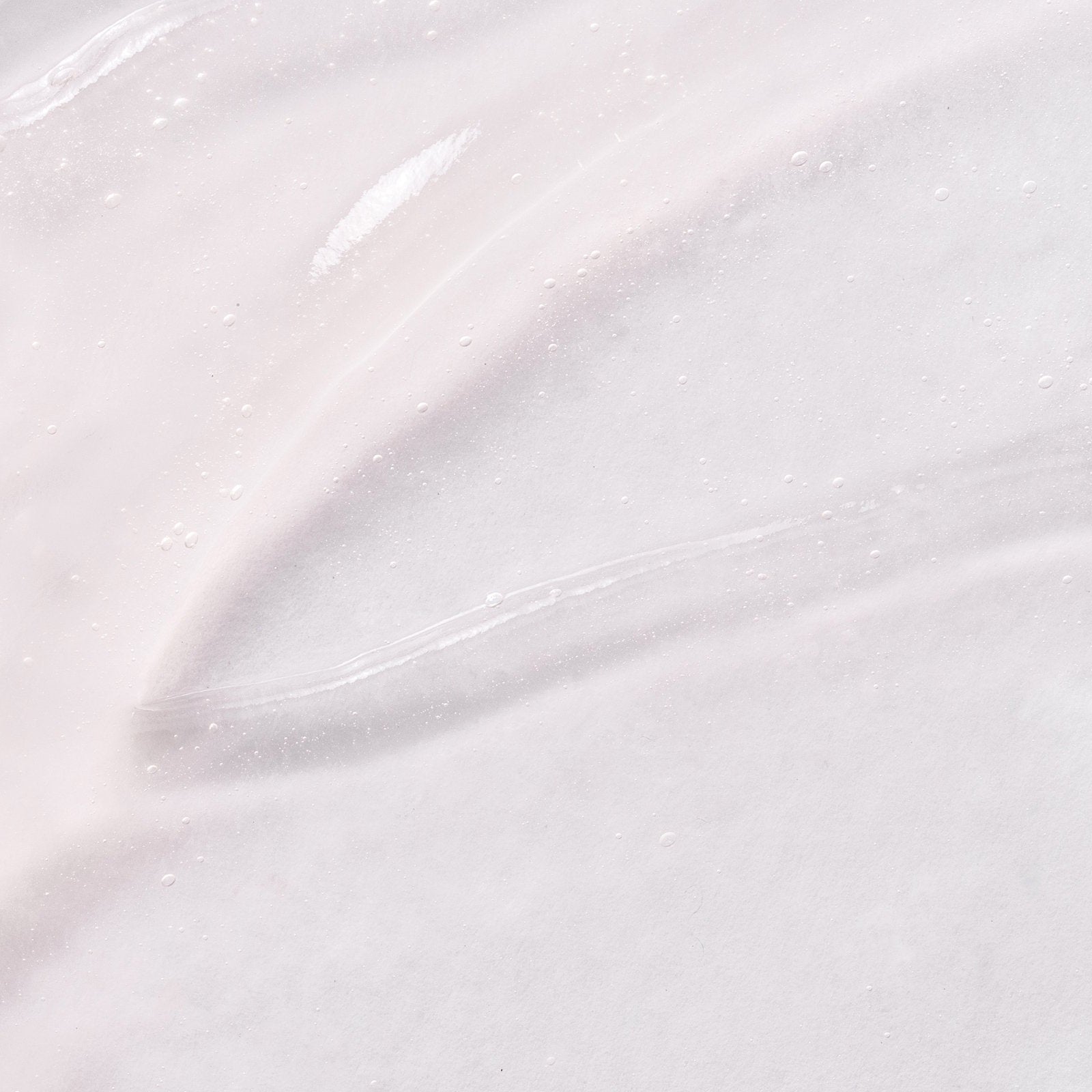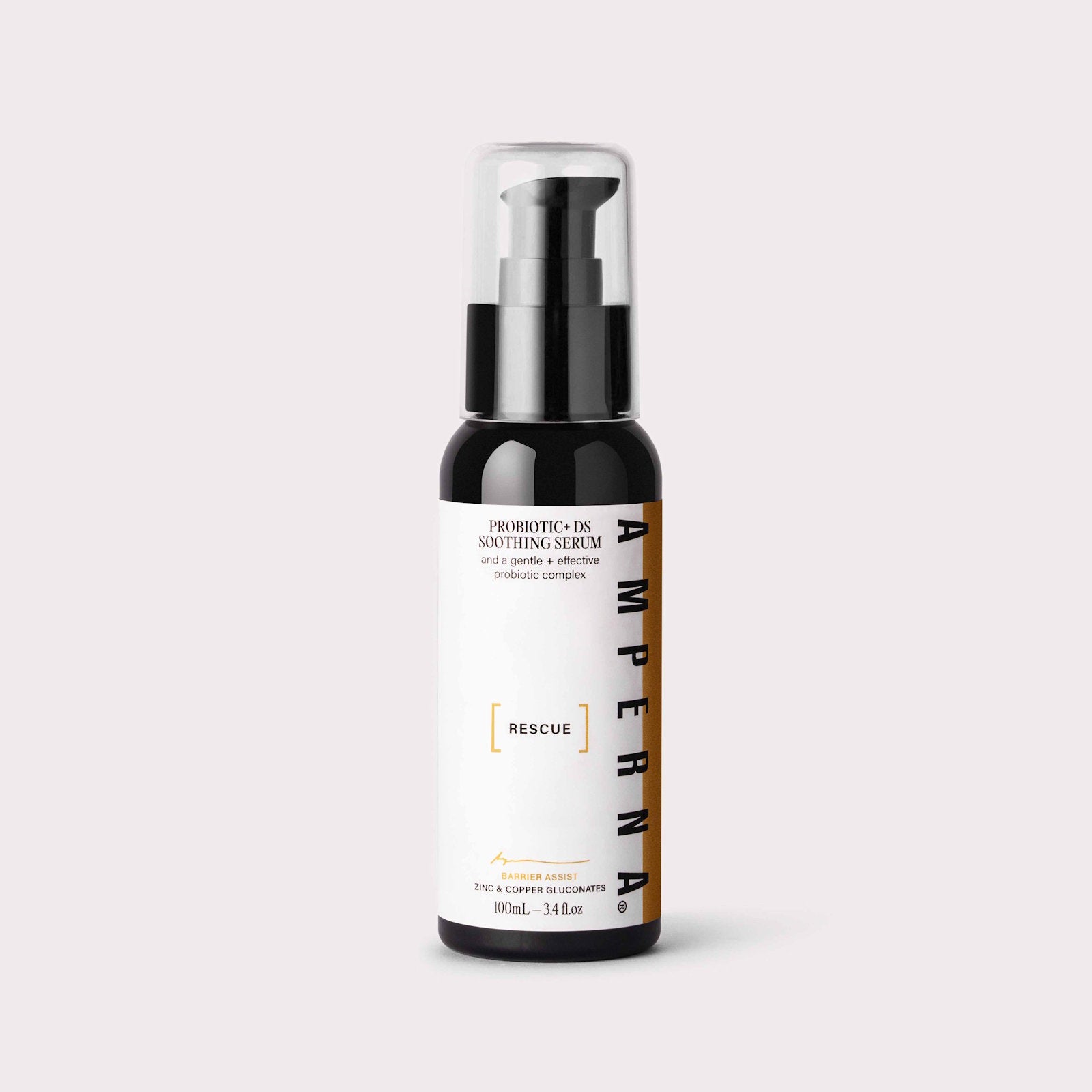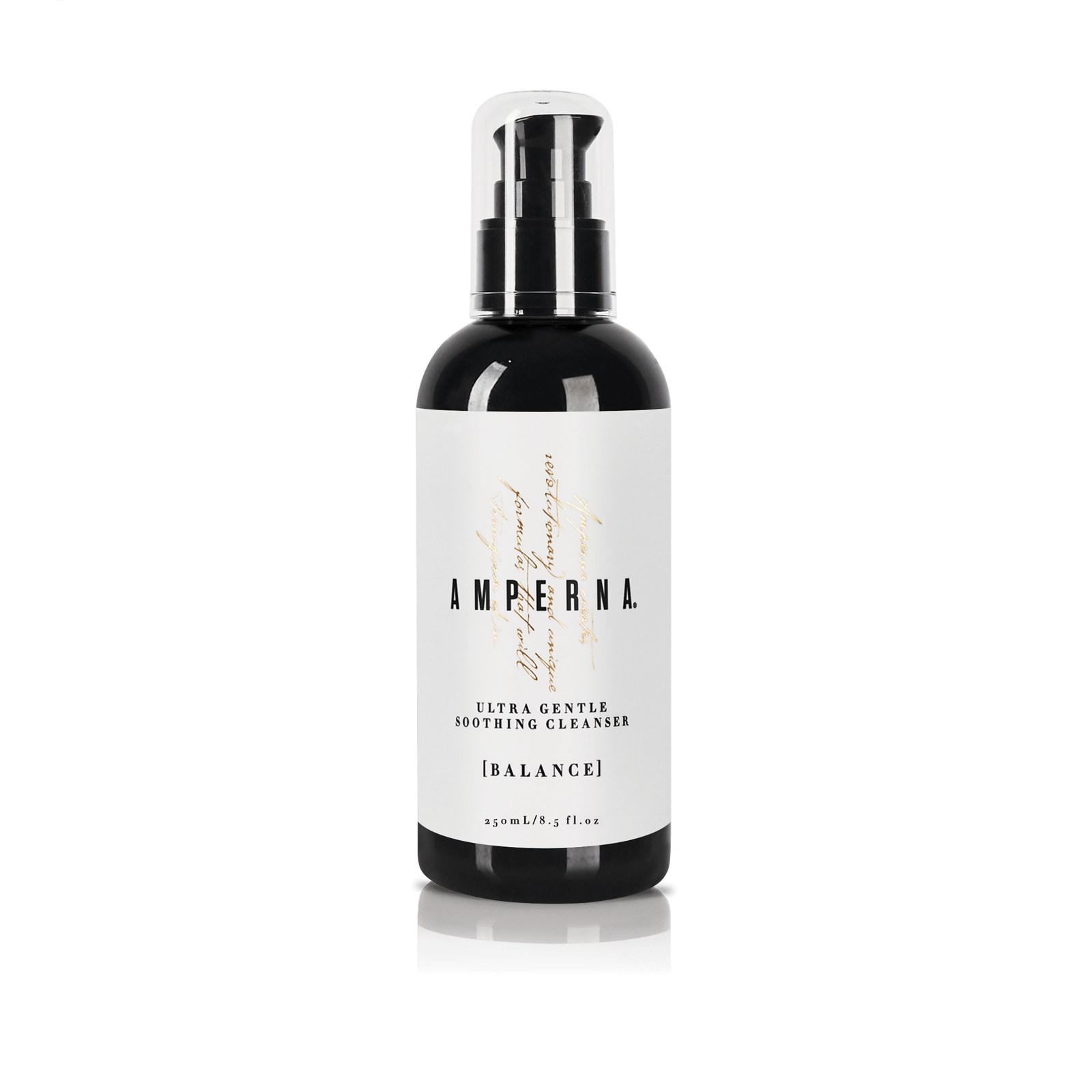Topical Steroids, also called topical corticosteroids, are often prescribed for various inflammatory skin conditions like eczema, psoriasis, dermatitis, rosacea, and even allergic reactions. They are available in a range of potency strengths and offered in creams, ointments, gels and other solutions, depending on what you are treating.
While they can be effective at reducing inflammation, redness, and swelling, they should be used with care due to potential side effects.
Kiri, founder of AMPERNA® became acutely aware of the negative side effects steroid medications can have when she was incorrectly diagnosed and prescribed them to treat her skin conditions.
She had recently developed a severe case of pustular acne that was so painful she could not sleep at night. She then developed perioral dermatitis, a common facial skin irritation that manifests as spots and flaky skin around the mouth and chin.
Kiri searched for treatment options and in her search, she was prescribed a topical steroid. Instead of helping her condition, which she later discovered was triggered by a fluoride and latex allergy, it made her skin a lot worse.
The side effect was her perioral dermatitis spread and resulted in sore, pimply, flaky and inflamed skin covering the bottom of her face.

What are Steroid Medications?
Your body naturally produces steroid hormones to help it fight stress, injury and disease.
Steroid medications are anti-inflammatory drugs and have a similar effect to the hormones produced by the body.
Steroid medications on the market include methylprednisolone, cortisone, hydrocortisone, prednisolone, prednisone and dexamethasone. They can be administered in a range of ways: orally, with an inhaler, by injection, as drops for eyes or ears or as a cream applied topically to the skin.

Topical Steroids for Skin Conditions & Their Potential Side Effects
For over 50 years, dermatologists have been treating eczema and atopic dermatitis with topical steroids. These medications are often recommended when traditional skin care regimens fail i.e.
- Regular use of moisturisers
- Using anti-bacterial controls
- Eliminating possible food allergies/intolerances
- Eradicating environmental allergens such as dust mites, plant pollens or animal fur
- Addressing irritation from soaps, fabrics, detergents or other chemicals
Whilst the use of topical steroids can help skin conditions in the short term, for some people like Kiri, there can also be serious side effects.
Topical steroid addiction/withdrawal, sometimes referred to as 'red skin syndrome', can occur when frequently using or misusing moderate to high potency corticosteroids and then suddenly stopping.
The condition can manifest in two ways:
- A rash that develops within days to weeks after stopping the use of topical steroids.
- A worsening rash that requires stronger and more frequent application of topical steroids to control.
There are two types of rashes that may develop:
- Red, swollen, scaly and peeling
- Red, pus-filled bumps without scaling or peeling.
The skin may be burning, stinging or itchy, and you may experience facial hot flashes.
Based on the available research, the recommendation given is to "continue vigilance and adhere to a safe, long-term treatment plan developed in conjunction with your dermatology provider".
Please be aware that Elidel and Tacrolimus are classed as immunosuppressants. Immunosuppressants suppress your immune response to an issue, so it is still possible to rebound from these creams. Please read about the FDA's Black-box warning for these medications here.
If you need topical steroid withdrawals support you can sign up to Holistic Coaching with Kiri as she has extensive knowledge on oral and topical steroid withdrawals. And there are also steroid withdrawals support groups via ITSAN.
Topical Steroid Withdrawal (TSW)
Treatment and Dealing with Topical Steroid Withdrawal
How do you manage the symptoms of topical steroid withdrawal? The treatments and methods available for this side effect can include the following:
- Discontinuing the steroid. While there are conflicting reports as to whether it is best to immediately stop using the steroid or gradually taper off, we recommend the latter. Stopping the steroid should be done gradually as there can be side effects from immediately stopping a topical steroid that you have been using for an extended period of time. It is best to manage this process with the help of your Dermatologist or Doctor.
-
Using other medications (such as antihistamines or antibiotics). Antihistamines have been shown to help with the itching that some people with TSW may experience.
As the chances of infection can be increased by TSW you may need to use antibiotics to manage an infection and stop this from occurring. - Using methods to soothe the symptoms. Cool compresses can help to alleviate the burning symptom from TSW.
- Changing your skin care routine. Your skin care routine may need to be changed if you are currently using products that aggravate the TSW symptoms. By reducing the amount of products that you use on your skin you can help to get it functioning the way it is supposed to.
- Psychological Support. The symptoms of TSW can be very distressing if you are experiencing them and additional help may be required. Speaking to a Psychologist or a Counsellor can provide some benefit to dealing with your symptoms and mental health around this.
How long will Topical Steroid Withdrawal last?
Withdrawal symptoms include swelling, redness, burning, and skin sensitivity usually begins within 1-2 weeks of stopping the steroid. TSW can last for as long as you have been using the steroid for or, in the case of years of steroid misuse, even longer.

Holistic Skin Regimes to Consider
If faced with the prospect of topical steroids for your skin condition, you may also want to consider a variety of traditional/holistic approaches.
Kiri discovered it took a combination of health & wellness measures to help her acne and perioral dermatitis. She changed her diet, took supplements, exercised, used de-stress techniques and developed a tailored skincare range.
When it comes to eczema, Eczema Association Australasia suggests a number of options to consider as part of a holistic approach:
- Keep fingernails short to prevent scratching from breaking the skin and wear cotton mitts or gloves at night
- Wearing 100 per cent cotton or soft fabrics – avoiding rough, scratchy fibres and tight clothing
- Using rubber gloves with cotton liners
- Having lukewarm baths and showers
- Using hypoallergenic products and avoiding anything artificially perfumed
- Gently patting, not rubbing, the skin dry with a soft towel
- Applying a moisturizer to damp skin to "lock in" the moisture
- Avoiding rapid changes of temperature and activities that raise a sweat
- Reducing dust mites
- Using sensitive skin washing powders and detergents
- Reducing daily stress
- Learning your eczema triggers and how to avoid them
- Developing and maintaining a daily skin routine
For perioral dermatitis, The American Academy of Dermatology recommends ceasing topical steroids but cautions the rash can worsen before it gets better.
In addition, they advocate for a change in your skin care routine: "Skin care can play an important role in treating this rash. You may need to switch to a mild, artificial fragrance-free cleanser and be very gentle when you wash your face. You may need to use artificial fragrance-free skin care products."
As part of your skin care routine, Kiri developed AMPERNA® to help people with their holistic approach.
The AMPERNA® range is suitable for all skin types and has been tested on eczema, perioral dermatitis, rosacea, acne prone skin and more. AMPERNA® is an Australian owned, ethical skincare brand, dedicated to creating revolutionary and unique formulas to help rebalance and transform the appearance of skin.
Go to amperna.com for more information.
References:
https://www.aad.org/public/diseases/rashes/perioral-dermatitis
https://www.racgp.org.au/afp/2016/june/topical-corticosteroid-addiction-and-withdrawal-%E2%80%93-an-overview-for-gps/
https://www.eczema.org.au/managing-eczema/
https://www.hss.edu/conditions_steroid-side-effects-how-to-reduce-corticosteroid-side-effects.asp
https://www.ncbi.nlm.nih.gov/pmc/articles/PMC4171912/
https://www.eczema.org.au/steroid-creams/
https://www.dermcoll.edu.au/about/position-statements/
https://www.buoyhealth.com/diagnoses-a-z/topical-steroid-withdrawal/
https://nationaleczema.org/warnings-for-topical-steroids-eczema/
